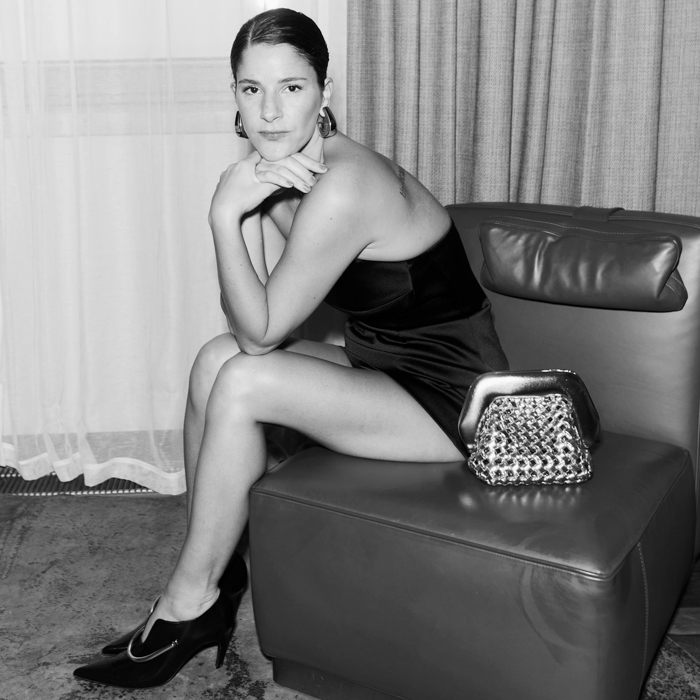It’s hard to find anyone who hasn’t heard of Pierre Hardy – inside and outside the fashion industry. Besides running his eponymous label, it’s less known that he’s also in charge of Hermès high jewelry. Bold colors, rich textures, and chunky diamonds are integral to his daily job, designing Hermès’s high jewelry line. Below, Hardy discusses Hermès’s quintessential usage of color and the provision of the original codes of the house. Cover image: courtesy of Hermès
Also, read: THE EVERLASTING APPEAL OF THE HERMÈS BIRKIN BAG, EXPLAINED BY AN EXPERT
IN CONVERSATION WITH PIERRE HARDY, CREATIVE DIRECTOR OF HERMÈS JEWELRY
Pierre Hardy knows the tricks of the trade. While working under Claude Brouet for nine years (1990 – 1999) at Hermès’s shoe design team, he stood at the cradle of the house’s Oran Sandal in 1997. Remember the Quick Trainer? Hardy developed it. Fun fact: his design made Hermès the first luxury brand to tap into leather trainers. It was 2001 when Hardy got in charge of Hermès’s jewelry line. “I wasn’t even remotely interested in fashion,” Hardy infamously told the New York Times in 2018. It’s hard to think that one of the world’s most influential shoe and jewelry designers would’ve chosen a different path.
“A lot of the work is based on my memories. And many people have an image of Hermès based on their recollections. Sometimes, they’re different from the reality of what the thing was, but that’s OK. What I’m trying to do is to make new memories for our clients. So I try to make something better; to give it a new shape and image,” he told The Telegraph in 2017. Since then, Hardy hasn’t sat still, with Hermès’s latest high jewelry collection to be his most extravagant, show-stopping to date.
What’s the collection’s theme?
Pierre Hardy: “Color! This collection aims to create a vocabulary that moves away from the recognizable forms of the brand. It’s a vocabulary of emancipation that embraces a sense of freedom, suggesting overcoming obstacles using an equestrian image. I wanted to find a way to express this fundamental phenomenon – color at Hermès – and build a strong, autonomous, independent identity. This collection is a manifestation of color.”
What was the starting point of your color experiment?
Pierre Hardy: “I had the opportunity to explore color theories during my art studies, and I revisited them with passion and method to develop this collection. This theoretical study establishes a hierarchy of colors (primary, secondary, tertiary), considers their relationships, complementarities, temperature… Some pieces are based on these theories and lead to more narrative explorations; I like to start from something structured, defined, and rigorous and then organize its diffraction. Combining color with a shape lets the mind wander: if red is square, what story does this square tell? If yellow is triangular, the mind might fleetingly visualize a superhero costume pattern, for example, or connect it to other memories: an artwork, a record cover, architecture, a feeling…”
How does this complexity meet the Hermès universe?
Pierre Hardy: “The brand can emit various signs, revisit the original forms of the house – the rod ring, the Chaîne d’ancre, the Kelly and Birkin bags – and open up new avenues. It is precisely this eclecticism that defines the identity of this collection, in which the goal was to consider how color settles on the body, somewhat like makeup, to explore the images of color anchored in me, or to focus on the history of jewelry. I wanted to combine all this and make it contemporary and “Hermès” while seeking the wonder that color produces – that wonder tinged with surprise that arises, for example, from the colorization of a black-and-white film.”
Color at Hermès is not a detached concept…
Pierre Hardy: “Color is very prominent at Hermès; there’s even a color library for silk with up to 75,000 references. Paradoxically, this is the first time in the house’s history that such a wide variety of stones is used for high jewelry: emeralds, rubies, sapphires, and diamonds, representing green, red, blue, and white. Color is a natural wealth that can be infinitely tapped, and I wanted to explore the entire spectrum! To achieve this, we used fine stones alongside precious ones to have a broader, more precise palette. The high-level stone-setting and mounting work allowed us to achieve subtle gradients. The jewelry work is almost supernatural and magical, transforming one substance into another by organizing shifts from one universe to another: from paper drawing to stone and metal objects, from theoretical to ornamental, from two-dimensional representation to three-dimensional.”
You could say this collection has a wealth of very joyful propositions.
Pierre Hardy: “I wanted to express many ideas simultaneously; one can desire quite different things simultaneously. However, I did not try to unify heterogeneous objects through color. Rather, the exploration of color produced results of great richness and extraordinary diversity. I did not want to stifle this diversity but instead to honor it, giving it all possible opportunities for resonance and flourishing. I did not seek to restrict but to enable.”
Keep an eye on our Instagram for updates.














